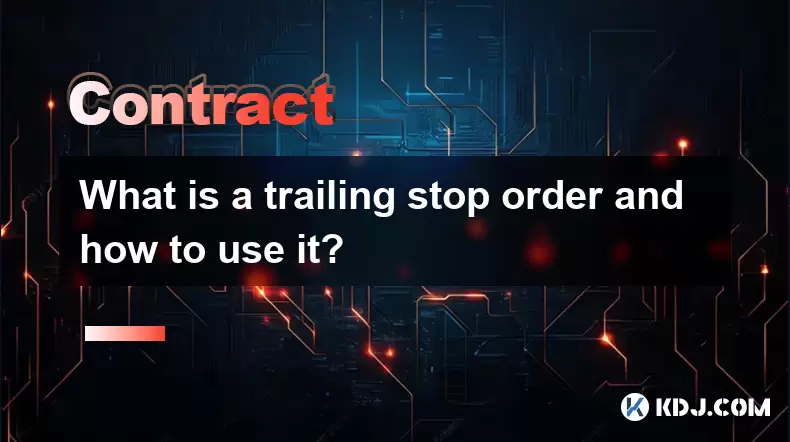-
 Bitcoin
Bitcoin $119,448.2396
0.27% -
 Ethereum
Ethereum $2,992.9919
0.78% -
 XRP
XRP $2.9074
1.58% -
 Tether USDt
Tether USDt $1.0001
0.00% -
 BNB
BNB $687.9097
-0.40% -
 Solana
Solana $161.5804
-0.47% -
 USDC
USDC $0.9998
0.01% -
 Dogecoin
Dogecoin $0.1948
-2.10% -
 TRON
TRON $0.3013
-0.08% -
 Cardano
Cardano $0.7286
-3.16% -
 Hyperliquid
Hyperliquid $47.3153
-3.81% -
 Stellar
Stellar $0.4543
-9.79% -
 Sui
Sui $3.8809
5.63% -
 Chainlink
Chainlink $15.6262
-0.55% -
 Hedera
Hedera $0.2368
-5.31% -
 Bitcoin Cash
Bitcoin Cash $501.2030
-0.80% -
 Avalanche
Avalanche $21.0650
-1.43% -
 UNUS SED LEO
UNUS SED LEO $9.0006
-0.39% -
 Shiba Inu
Shiba Inu $0.0...01310
-1.90% -
 Toncoin
Toncoin $3.0040
1.56% -
 Litecoin
Litecoin $93.8936
-1.20% -
 Monero
Monero $341.8918
1.27% -
 Polkadot
Polkadot $3.9087
-3.05% -
 Uniswap
Uniswap $8.9599
4.78% -
 Dai
Dai $0.9999
0.02% -
 Ethena USDe
Ethena USDe $1.0005
-0.02% -
 Bitget Token
Bitget Token $4.3954
-0.14% -
 Pepe
Pepe $0.0...01207
-2.26% -
 Aave
Aave $314.5223
1.72% -
 Bittensor
Bittensor $408.6988
2.76%
What is a trailing stop order and how to use it?
A trailing stop order helps crypto traders lock in profits by adjusting the sell price as the asset's value rises, while still allowing for potential gains if the market continues to move favorably.
Jul 15, 2025 at 03:14 pm

Understanding Trailing Stop Orders in Cryptocurrency Trading
A trailing stop order is a type of dynamic stop-loss mechanism used by traders to protect profits while allowing for potential upside gains. Unlike a traditional stop-loss order that remains at a fixed price, a trailing stop adjusts automatically as the market price moves in the trader’s favor. This feature makes it especially valuable in the volatile cryptocurrency market, where prices can swing dramatically within short periods.
In the context of crypto trading, when you place a buy trailing stop order, the stop price trails behind the current market price by a specified percentage or amount. Conversely, a sell trailing stop order follows the highest price reached by an asset during a rally, protecting profits if the price reverses.
How Does a Trailing Stop Order Work?
The core functionality of a trailing stop revolves around its ability to "trail" the market price. Let's assume you're holding Bitcoin (BTC) and have set a trailing stop of 5% below the highest price it reaches after purchase. If BTC rises from $30,000 to $40,000, the trailing stop will adjust upward accordingly, locking in a minimum sell price of $38,000 (which is 5% below $40,000). Should the price then drop to $38,000 or lower, your position will be sold automatically at the best available market price.
It's important to understand that a trailing stop becomes a market order once triggered, which means execution is not guaranteed at the exact stop price, particularly in fast-moving markets or during high volatility events—common in crypto assets.
Steps to Set Up a Trailing Stop Order on a Crypto Exchange
Most major cryptocurrency exchanges like Binance, Coinbase, and Kraken support trailing stop orders. Here's how you can configure one:
- Log into your exchange account and navigate to the trading pair you want to trade (e.g., BTC/USDT).
- Locate the order type section and select “Stop” or “Advanced Orders,” depending on the platform.
- Choose the option labeled “Trailing Stop” from the available order types.
- Enter the amount of cryptocurrency you wish to trade.
- Specify the trailing distance either as a fixed amount or a percentage. For example, you may enter 2% or $500.
- Review your settings carefully before confirming the order placement.
Some platforms also allow you to set a limit price along with the trailing stop, turning it into a trailing stop-limit order, which provides more control over execution price but carries the risk of non-execution if the market moves too quickly.
Use Cases and Practical Scenarios
Traders often use trailing stops in both long and short positions to manage risk effectively. For instance, if you’ve entered a long position on Ethereum (ETH) expecting a bullish breakout, a trailing stop allows you to ride the trend without manually adjusting your stop-loss every time the price increases.
Another scenario involves swing traders who aim to capture medium-term gains. Suppose ETH starts climbing from $1,500 to $2,000, and you’re unsure how far it will go. By placing a 10% trailing stop, you ensure that even if the price suddenly drops after reaching $2,000, your profit remains intact at no less than $1,800 per ETH.
Day traders also benefit from trailing stops during intraday swings. In fast-moving altcoin pairs, a tighter trailing stop of 2–3% can help secure small but consistent profits without being stopped out prematurely due to minor pullbacks.
Key Considerations Before Using Trailing Stops
While trailing stop orders are powerful tools, they come with certain limitations and risks. One major consideration is market slippage, especially in low-liquidity tokens. If the asset you're trading doesn't have sufficient volume, your trailing stop might execute at a much worse price than expected.
Also, choosing the right trailing distance is crucial. Too tight, and you may get stopped out early due to normal price fluctuations; too wide, and you risk giving back significant gains before exiting the trade.
Moreover, some exchanges charge different fees for stop orders compared to standard market or limit orders. It’s essential to review the fee schedule before initiating any trades involving trailing stops.
Lastly, always remember that a trailing stop does not guarantee profit. It only helps manage exits based on predefined conditions. Your initial entry point and overall strategy still play a critical role in determining profitability.
Frequently Asked Questions (FAQs)
Q: Can I modify a trailing stop order after placing it?
Yes, most exchanges allow you to edit or cancel a trailing stop order as long as it hasn’t been triggered. You can adjust the trailing distance or remove the order entirely.
Q: Is a trailing stop suitable for all cryptocurrencies?
While trailing stops work well for highly liquid assets like Bitcoin and Ethereum, they may not perform optimally on smaller-cap altcoins due to higher volatility and lower trading volumes, which can lead to premature triggering or slippage.
Q: What’s the difference between a trailing stop and a regular stop-loss?
A regular stop-loss remains static at a fixed price regardless of market movement, whereas a trailing stop dynamically adjusts to follow the price trend, helping lock in profits automatically.
Q: Do all crypto exchanges support trailing stop orders?
No, not all exchanges offer trailing stop functionality. Major platforms like Binance, Kraken, and KuCoin do support them, but some regional or newer exchanges may not include this feature yet. Always verify with your exchange before relying on it.
Disclaimer:info@kdj.com
The information provided is not trading advice. kdj.com does not assume any responsibility for any investments made based on the information provided in this article. Cryptocurrencies are highly volatile and it is highly recommended that you invest with caution after thorough research!
If you believe that the content used on this website infringes your copyright, please contact us immediately (info@kdj.com) and we will delete it promptly.
- PI Coin MIA: Why Coinbase and Binance Aren't Budging
- 2025-07-15 20:30:12
- Bitcoin Profits Take a Dip: What's Behind the Drop?
- 2025-07-15 20:30:12
- TAC Mainnet & Native Token Launch: A New Era for Telegram?
- 2025-07-15 18:50:12
- Ripple's RLUSD Stablecoin Eyes EU Expansion: Luxembourg Launch Under MiCA
- 2025-07-15 18:50:12
- Whales, DeFi Tokens, and DOGE: A New Era of Crypto Investments?
- 2025-07-15 19:10:12
- Bitcoin Yield Takes Center Stage: Function's $10M Raise & Galaxy Digital's Bet
- 2025-07-15 19:10:12
Related knowledge

What is a stablecoin-margined contract vs a coin-margined contract?
Jul 15,2025 at 06:36pm
Understanding the Difference Between Stablecoin-Margined Contracts and Coin-Margined ContractsIn the world of cryptocurrency derivatives, margin plays...

How to backtest a Bitcoin futures trading strategy?
Jul 15,2025 at 11:35am
Understanding Bitcoin Futures TradingBitcoin futures trading involves contracts to buy or sell Bitcoin at a predetermined price and date in the future...

Psychology of trading Bitcoin contracts
Jul 13,2025 at 02:50am
Understanding the Emotional Rollercoaster of Bitcoin Futures TradingBitcoin contract trading, especially in the form of futures, introduces a high lev...

Can the Lightning Network be used for smart contracts?
Jul 14,2025 at 11:28pm
Understanding the Lightning Network's Core FunctionalityThe Lightning Network is a second-layer solution built on top of blockchain protocols like Bit...

How does macroeconomic news affect Bitcoin futures prices?
Jul 15,2025 at 04:56pm
Understanding the Relationship Between Macroeconomic News and Bitcoin FuturesBitcoin futures are derivative contracts that allow traders to speculate ...

Best time of day to trade Bitcoin contracts?
Jul 13,2025 at 05:29am
Understanding Bitcoin Contracts and Their VolatilityBitcoin contracts, particularly futures contracts, are derivative instruments that allow traders t...

What is a stablecoin-margined contract vs a coin-margined contract?
Jul 15,2025 at 06:36pm
Understanding the Difference Between Stablecoin-Margined Contracts and Coin-Margined ContractsIn the world of cryptocurrency derivatives, margin plays...

How to backtest a Bitcoin futures trading strategy?
Jul 15,2025 at 11:35am
Understanding Bitcoin Futures TradingBitcoin futures trading involves contracts to buy or sell Bitcoin at a predetermined price and date in the future...

Psychology of trading Bitcoin contracts
Jul 13,2025 at 02:50am
Understanding the Emotional Rollercoaster of Bitcoin Futures TradingBitcoin contract trading, especially in the form of futures, introduces a high lev...

Can the Lightning Network be used for smart contracts?
Jul 14,2025 at 11:28pm
Understanding the Lightning Network's Core FunctionalityThe Lightning Network is a second-layer solution built on top of blockchain protocols like Bit...

How does macroeconomic news affect Bitcoin futures prices?
Jul 15,2025 at 04:56pm
Understanding the Relationship Between Macroeconomic News and Bitcoin FuturesBitcoin futures are derivative contracts that allow traders to speculate ...

Best time of day to trade Bitcoin contracts?
Jul 13,2025 at 05:29am
Understanding Bitcoin Contracts and Their VolatilityBitcoin contracts, particularly futures contracts, are derivative instruments that allow traders t...
See all articles

























































































